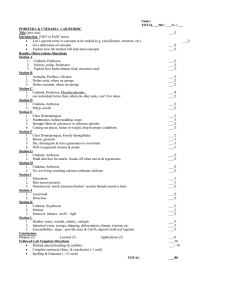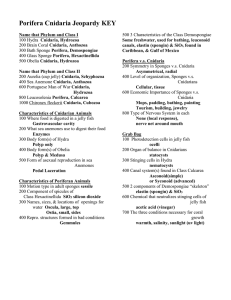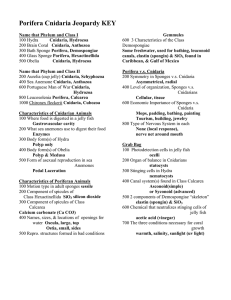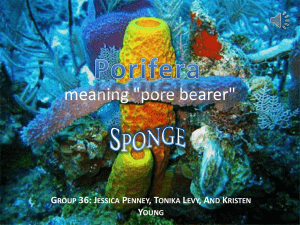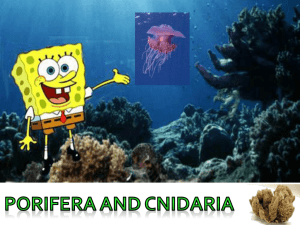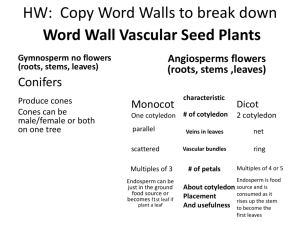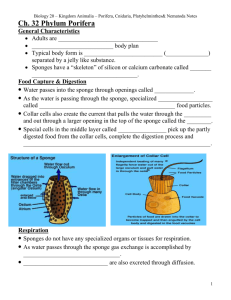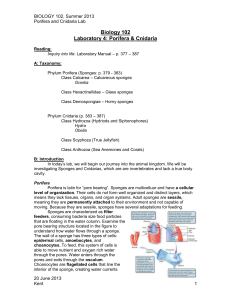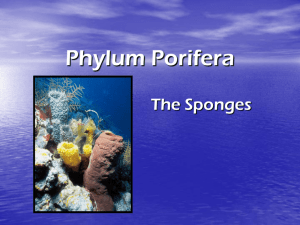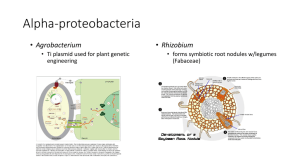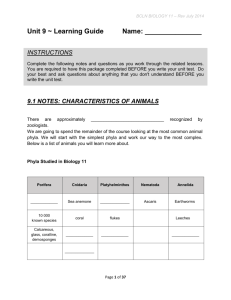Porifera and Cnideria
advertisement
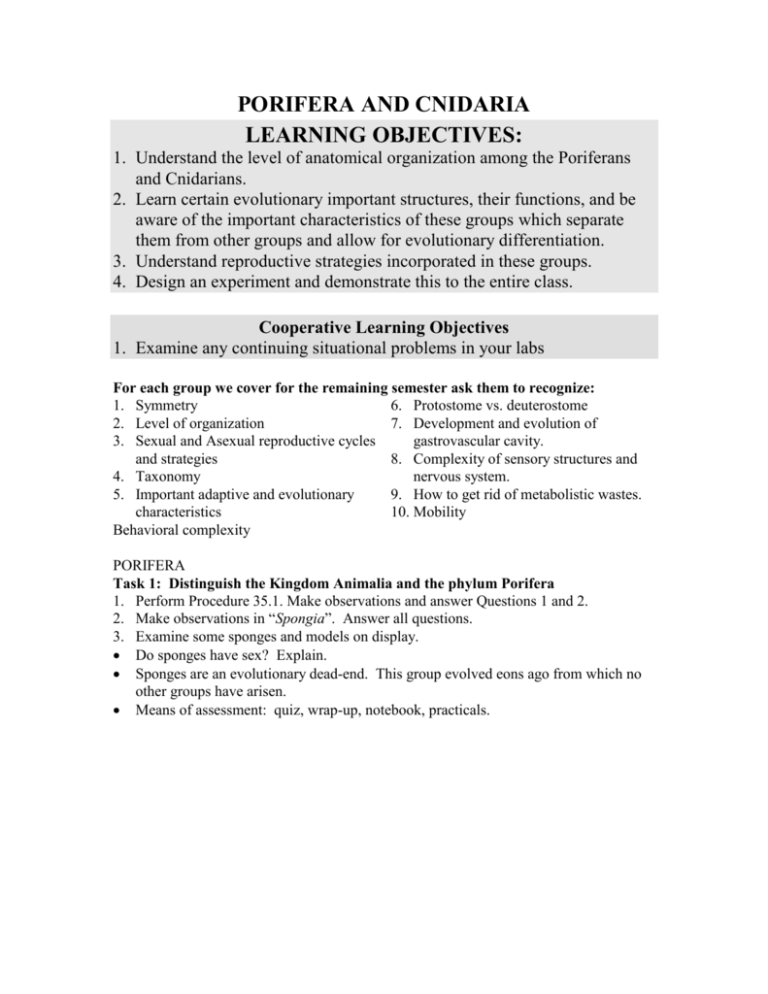
PORIFERA AND CNIDARIA LEARNING OBJECTIVES: 1. Understand the level of anatomical organization among the Poriferans and Cnidarians. 2. Learn certain evolutionary important structures, their functions, and be aware of the important characteristics of these groups which separate them from other groups and allow for evolutionary differentiation. 3. Understand reproductive strategies incorporated in these groups. 4. Design an experiment and demonstrate this to the entire class. Cooperative Learning Objectives 1. Examine any continuing situational problems in your labs For each group we cover for the remaining semester ask them to recognize: 1. Symmetry 6. Protostome vs. deuterostome 2. Level of organization 7. Development and evolution of 3. Sexual and Asexual reproductive cycles gastrovascular cavity. and strategies 8. Complexity of sensory structures and 4. Taxonomy nervous system. 5. Important adaptive and evolutionary 9. How to get rid of metabolistic wastes. characteristics 10. Mobility Behavioral complexity PORIFERA Task 1: Distinguish the Kingdom Animalia and the phylum Porifera 1. Perform Procedure 35.1. Make observations and answer Questions 1 and 2. 2. Make observations in “Spongia”. Answer all questions. 3. Examine some sponges and models on display. Do sponges have sex? Explain. Sponges are an evolutionary dead-end. This group evolved eons ago from which no other groups have arisen. Means of assessment: quiz, wrap-up, notebook, practicals. CNIDARIA Task 2: Distinguish The Class Hydrozoa What important differences separate the Cnidaria from Porifera? Would any of these things represent an adaptive advantage? Why? 1. Perform Procedure 35.2. Make observations and answer Questions 3 through 7. 2. Observe Hydra mounts and models on display. 3. Perform Obelia observations and answer questions. 4. Examine Physalia and Gonionemus noting structures and answer questions. Examine the demo mount of Physalia . Means of assessment: quiz, wrap-up, notebook, practicals. Task 3: Distinguish the Class Scyphozoa. 1. Examine Aurelia and Cassiopeia. What distinguishes this class from Hydrozoa? 2. Examine the demo mount of Aurelia. 3. Answer question. Means of assessment: quiz, wrap-up, notebook, practicals. Task 4: Distinguish the Class Anthozoa. 1. Perform observations in Class Anthozoa. Observe preserved and model specimens of anemones and corals. Answer questions. 2. Do not perform a cross section of the Metridium. There will be a demonstration mount set-up for you. We do not have Tubipora, however, there are many examples of coral skeletons available for demonstration. 3. Examine a section of coral under the dissection scope. Discern the position of each polyp when it was alive. Discern the septa within each pocket. Where did you see this previously? Means of assessment: quiz, wrap-up, notebook, practicals. INDEPENDENT INVESTIGATION. Task 5. Designing Your Independent Investigation 1. Choose an organisms observed in this lab topic and design a simple experiment answering a question about its behavior, growth patterns, and interactions with other species etc. Basically, think of a question you have based upon observations made in lab. 2. Put your question in the form of a hypothesis, then use the Scientific Method to test the predictions which would be generated if the hypothesis were true on not true. 3. Here some examples of possible questions: Can you tell what type of spicules a sponge has by sight or touch? Can a sponge reassociate if you pulverize it? What does this signify? Do hydra respond to light? What could this mean? Do hydra respond to chemical signals? What does this mean? What is the direction of water flow through a living sponge? Are all coral calcareous? 4. Formulate a testable hypothesis. 5. Predict the results of your experiment based on your hypothesis. 6. Outline the procedures used in the experiment. On a separate sheet of paper, list in numerical order each exact step of your procedure. If you have an idea for an experiment that requires materials other than those provided, ask your laboratory instructor about availability. If possible, additional supplies will be provided. Wen carrying out an experiment, remember to quantify your measurements when possible. 7. Perform the experiment, making observations and collecting data for analysis. 8. Record observations and data on a separate sheet of paper. Design tables and graphs, at least one of each. 9. Discuss your results in light of your hypothesis Be prepared to report your results to the class. Wrap up One Minute Paper
